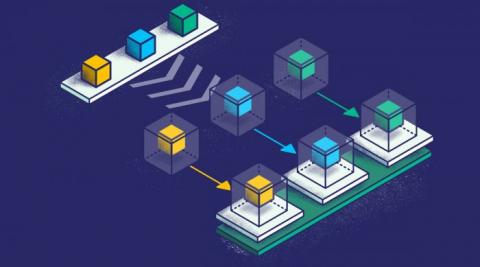Security | Threat Detection | Cyberattacks | DevSecOps | Compliance
%term
Retail and Hospitality Sector Has Impressive Fix Rate, but Room to Improve
Over the past year, the retail and hospitality industries have been forced to adapt to the “new normal.” Since lockdowns and health concerns have prevented or dissuaded in-person shopping or dining, the new normal has been e-commerce. Smaller businesses not equipped for the increase in e-commerce have had to undergo rapid digital transformation in order to stay afloat. But, unfortunately, e-commerce was not the only thing to increase in 2020.
Data Classification Is Data Storage
‘Business’ is a verb that practically means the movement of data. If you aren’t sharing data – keeping the books, sharing ideas and stats about sales, getting the correct information regarding the customer or data to the customer – then you aren’t doing much business. But organizations need to protect their data along the way. Infosec has so many ways of protecting those sources of data, so much so that users of the data often complain.
Improving Your Security Posture with the Pipeline Cybersecurity Initiative
A few years ago, I worked alongside some oil commodity traders. Environmental concerns aside, I never realized how many parts were required to get the oil out of the ground, not to mention everything else that finally resulted in the production of refined products that surround our lives. As a cybersecurity professional, I was more interested in how all the pipelines were intertwined and, of course, protected.
NIS2: what organisations need to know about proposed changes to the NIS Directive
Demystifying CVSS Scoring
The Common Vulnerability Scoring System (CVSS) can help you navigate the constantly growing ocean of open source vulnerabilities. But it’s difficult to lend your trust and put the security of your organization and your customers into the hands of a system that you may know very little about. Let’s take a closer look at the CVSS to see what it’s all about.
Does a Ransomware Attack Constitute a Data Breach? Increasingly, It May
Historically, one difference between a company victimized by ransomware and those hit with a hacking intrusion that resulted in stolen data was that in a ransomware attack, the data wasn’t actually stolen, but was encrypted so that the victim would have to pay a ransom to regain access. Unlike traditional data thefts, ransomware—the theory went—didn’t really steal data. It encrypted it so that the authorized users couldn’t get to it unless a ransom was paid.
Network Security: The Journey from Chewiness to Zero Trust Networking
Network security has changed a lot over the years, it had to. From wide open infrastructures to tightly controlled environments, the standard practices of network security have grown more and more sophisticated. This post will take us back in time to look at the journey that a typical network has been on over the past 15+ years. From a wide open, “chewy” network, all the way to zero trust networking. Let’s get started.
5 New cybersecurity threats and challenges facing the financial services sector
It’s been a mixed year for the financial services sector. Some companies have seen increased demand for their services, while others have struggled to deal with the downturn in mortgage deals and reduced consumer spending.
On Sale! Access to your Crown Jewels
Remote Desktop Protocol (RDP) is a communication protocol developed by Microsoft, which provides a user with a graphical interface to connect to another computer over a network connection[1]. Once connected, the remote user will be able to communicate with the machine using their input devices, keyboard and mouse, and to have their screen displaying the output of their actions – as if they were physically connected. Simply put, gaining access to your crown jewels.










